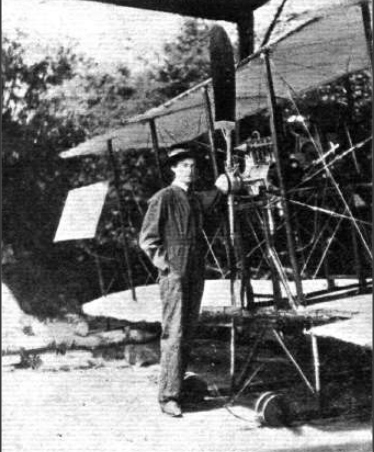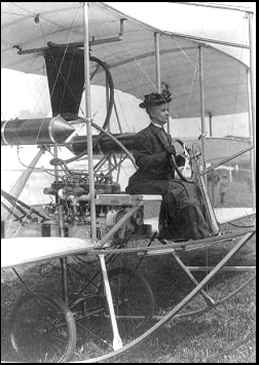The First Women to Design and Build Aeroplanes: Lilian E. Bland and E. Lilian Todd
- MrsAeroLec
- Apr 5, 2021
- 5 min read
As a follow up on my last blog on Elsie MacGill, the first woman to graduate as an aerospace engineer, I was curious if Elsie's Maple Leaf II was the only aircraft ever designed by a woman or a woman chief aeronautical engineer. Most of us will know that the Wright Brothers were the first to successful build and fly their own aircraft, which had its first flight in Kitty Hawk, Ohio, U.S.A. on 17 December 1903. Were there also any women at that time who designed and build their own aircraft? Some further research led me to two women, based on each side of the Atlantic Ocean, one in New York in the U.S.A. and one in Carnmoney, Country Antrim in Northern Ireland, who each designed and built their own aircraft. Both aircraft flew with their first flights 1 year apart with one woman allowed to pilot her own craft and the other not. They have one thing in common: they were both named Lilian.
Lilian E. Bland (left) and E. Lilian Todd (right) with their respective aircraft.
[Left: "The 'Mayfly' Gets Its Engine", Flight. 16 July 1910 P 561, right: Library of Congress Collection, both Public Domain]
Lilian E. Bland (1878 - 1971) stemmed from a family of Irish gentry and, although born in England, she moved to Tobercooran house in Carnmoney near Belfast, in what is currently Northern Ireland, in the early part of the 1900s. By all accounts she was anything but bland, an unconventional woman for her times and therefore not always popular in her community (I like her already!) by wearing trousers, not riding side-saddle and shooting and hunting as well as working as a journalist and photographer. Allegedly inspired by a post card showing the Bleriot monoplane that was the first to fly across the English Channel (or la Manche) in 1909, she started to design and build her own aircraft in a workshop at their house in Carnmoney. She published much of her design in Flight Magazine in 1909 and 1910 . Her aircraft, which she apply named "MayFly" as in "It may fly or it may not" is a bi-plane initially developed, like many before her, as a glider, and later fitted with an engine, an A.V. Roe (Avro) 2- stroke engine. In her own words, as published in Flight Magazine in article entitled: The MayFly - the first Irish biplane:
"The wood used for the main spars is ash, the curve of the wing tips being steam bent. The ribs and stanchions are of spruce, the outriggers of bamboo, the skids of ash, and the engine bed of American elm. This engine bed is really a separate chassis set across the main spars, to which it is clipped; stays run from the rear spar to the chassis, which is also wired out to the upper and lower spars, so that it would be impossible for the engine to shift unless the whole machine were wrecked. Additional strength is also given to the wings by the wiring. The chassis carries the tank and the pilots seat, the latter being slung by four straps. In front of the seat, which is enclosed on all sides so that it is impossible to fall out of it, is the bar for the elevator control. The whole chassis can be removed in one piece either with or without the engine, which is held in place by four bolts."
(Flight Magazine, 17 Dec 1910, page 1025)
Left: "The 'Mayfly' - The First Irish Biplane.", [Flight. 17 December 1910 - Public Domain P. 1026], top and middle right: Drawings of MayFly [Leif Ohlsson via lilianbland.ie] and bottom right: [ "Flying in Ireland", Flight. 18 February 1911. P. 139 - Public Domain]
The MayFly did fly, piloted by Lilian Bland herself on 31 August 1910 and she wants to start her own aviation company selling aircraft. Her father is not too happy about their daughter's dangerous new endeavour and offers her a new car if she gives up flying, which she accepts. The MayFly is donated as a glider to a boys gliding club and the engine is sold off. She gets married and moves to Canada before settling in England from 1935, initially in Kent as Gardner and later after making a fortune on the stock market retiring to Cornwall.
A few years earlier, on the other side of the Atlantic, Emma Lilian Todd (1865 - 1937) started designing her own aircraft from 1906, although she did not actually build them herself. She was based in New York and worked in the Patent Office, studied law in New York and was already inventing things before turning to aircraft design as she was issued a patent for a typewriter copy holder in 1896. Her first design was a glider which she exhibited at Madison Square Garden in 1906. With the help of Olivia Sage who funded her to design and build her unnamed aircraft, a single engined (Rytek), two-seater triplane (although often misrepresented as a bi-plane). The aircraft design is described in detail in a New York Times article at the time:
"All the framework is constructed of the highest quality, straight-grained selected spruce. The upper sides of the plane are covered with unbleached muslin of the finest quality; the under sides, which are the real sustaining services and bear the brunt of the strain, are covered with seven ounce army duck - the strongest known material which could be used for the purpose. These covers are fastened, woman fashion, with strong stitches with sewing being employed in all the plane ...."
(New York Times, 28 November 1909)
The article goes on to describe other features in the design such as the use of piano wires and shock absorbers. Sadly, she was not allowed to fly the aircraft herself, but the aircraft did fly, piloted by Didier Masson on 7 November 1910.

Miss Todd in her aeroplane, 23 September 1909
[Library of Congress Collection - Public Domain]
Lilian Tod was also keen to educate others and started the Junior Aero Club of the United States in New York in 1907, mentoring and encouraging young people to design, build and test their own aircraft models. Shortly afterwards Todd moved on to other things and the aircraft was donated by Olivia Sage and herself to the New York National Guard in 1912 to allow them to develop an "air scout service" similarly to the one just set up by the U.S. army at the time.
In conclusion, it is safe to say that both women have more in common than their name. Both are trailblazers in their time, both are also able to sufficiently sustain themselves or gain funding to do so and already have a certain position in society. Privileges not open to many women in those times. Yet both also do not stay in aviation. Their interests are wide and they pursue many different activities in their life with aircraft design just being one of many. From a personal observation, something I often see in many female engineers. Perhaps something those who want to employ more female engineers should take into account.
In addition I feel it is a sad thing that the products of their wonderful minds no longer exist, neither aircraft has survived, only the memories of them. Yet another reminder we should be mindful of our (engineering) heritage and preserve it where possible.












